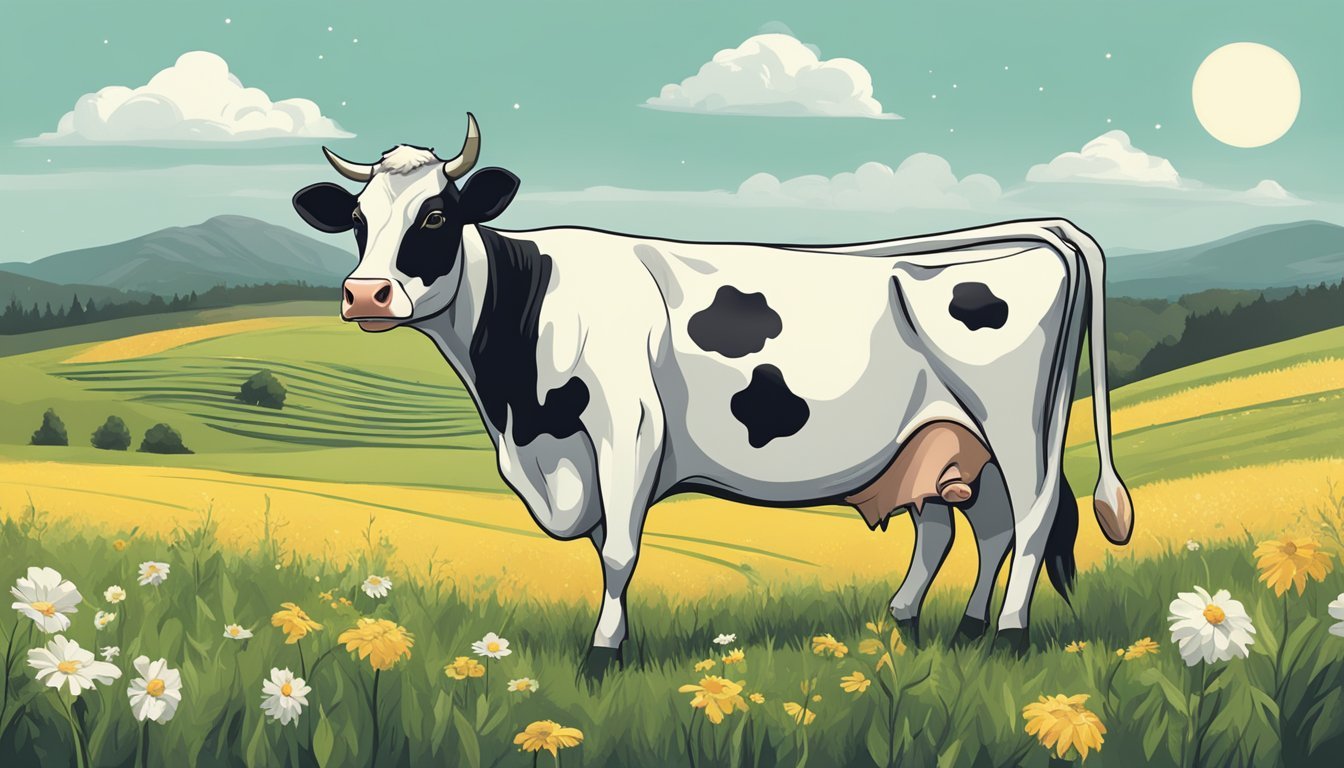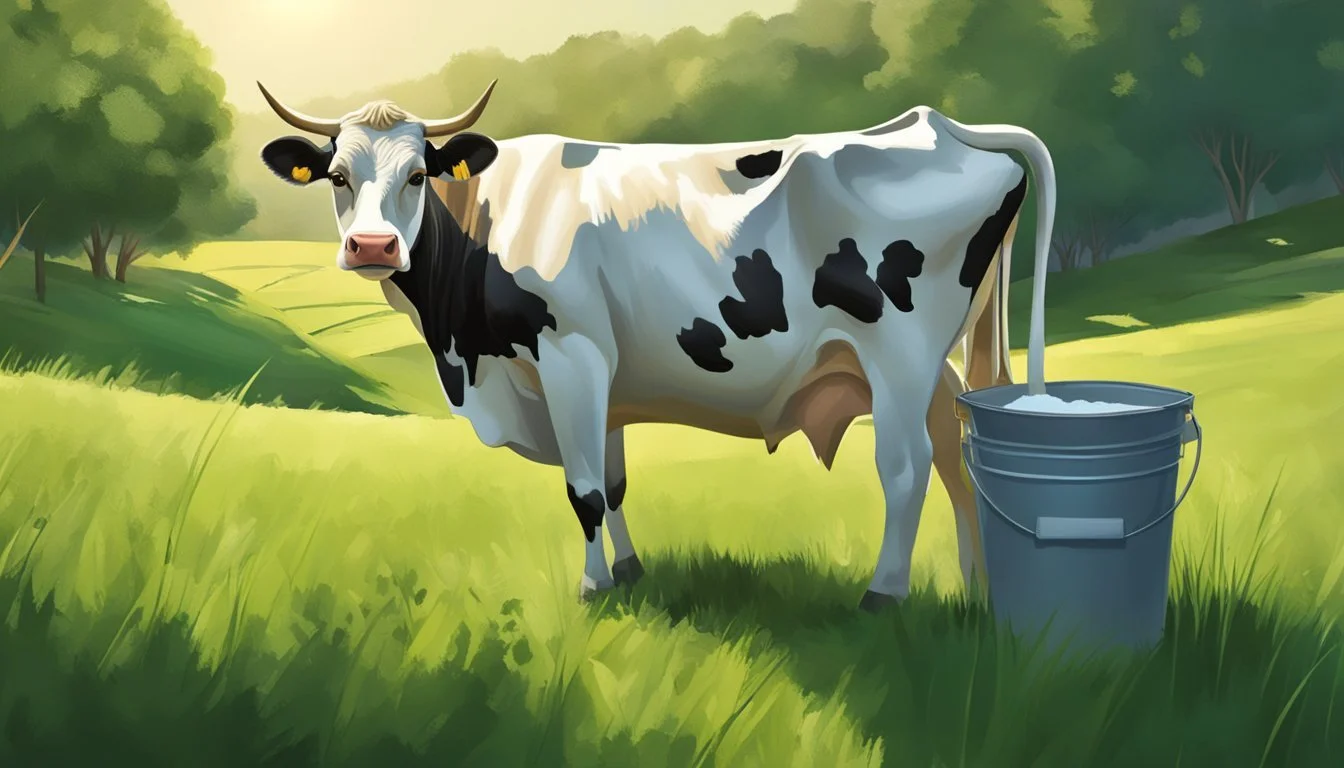The Raw Milk Diet
Your Step-by-Step Nutritional Blueprint
The Raw Milk Diet has garnered attention for its philosophy of relying on unpasteurized milk as a primary nutritional source. Proponents of this diet argue that raw milk provides a plethora of nutrients that are essential for the body's repair and healing processes, similar to how breastmilk nourishes and supports the growth of infants. With its comprehensive range of vitamins, minerals, fats, and proteins, raw milk is championed as a balanced and nutrient-dense option.
As the diet consists primarily of raw milk consumption, adherents typically consume significant quantities to meet their caloric and nutritional needs. It's not uncommon for an individual following the raw milk diet to drink at least three cups of raw milk each day, embracing the belief that the liquid form of these nutrients is more easily assimilated and digested by the body. This practice is rooted in historical treatments that date back to the 1900s, where the raw milk diet was employed to address various health issues, from digestive disorders to chronic diseases.
The nutritional content of raw milk indeed packs a considerable punch: a single cup can provide substantial amounts of calcium, protein, and fats, alongside other key vitamins. Within the scope of The Raw Milk Diet: A Comprehensive Guide, these nutritional aspects are thoroughly examined, along with an exploration into the historical context and the reported benefits versus the potential risks of consuming unpasteurized milk. The guide aims to offer an impartial overview, allowing individuals to make informed decisions about incorporating raw milk into their dietary regimen.
The raw milk diet is at the forefront of a nutritional raw milk renaissance, advocating for the consumption of natural, unprocessed dairy products as part of a balanced diet. This movement is a driving force behind the ongoing raw milk industry revolution, promoting a greater understanding of the potential benefits of raw milk consumption.
Advocates of the raw milk diet are passionate about highlighting the potential positive impact of raw milk on immune systems and overall well-being. They emphasize the need for clear and informative raw milk labels to ensure consumers are well-informed about the product they are choosing.
The raw milk movement advocacy is paving the way for a more informed and conscious approach to dairy consumption, fostering a deeper connection to food and promoting the benefits of unadulterated dairy products. As more individuals seek out natural and wholesome food options, the future of raw milk looks promising, with increasing awareness of its potential health benefits and a growing demand for high-quality, safe raw milk products.
In essence, the raw milk diet represents a positive shift towards embracing natural, unprocessed food choices and promoting a greater understanding of the potential benefits of raw milk consumption.
Understanding Raw Milk
This section delves into raw milk, contrasting its natural state with processed versions, and discussing its nutrient content, including vitamins, minerals, and enzymes.
What Is Raw Milk?
Raw milk refers to milk that comes straight from the cow, sheep, goat, or other mammals without undergoing pasteurization or homogenization. This unprocessed milk retains its natural enzymes, bacteria, and nutrients as they are found in the original liquid form.
Nutritional Profile of Raw Milk
The nutritional profile of raw milk is notable for its comprehensive array of nutrients. Raw milk typically contains:
Vitamins: A, D, and B-complex
Minerals: Calcium, phosphorus, magnesium, and potassium
Enzymes: Various types needed for digestion
Fatty Acids: Omega-3s and conjugated linoleic acid (CLA)
These contribute to raw milk's reputation as a nutrient-dense food.
Raw Milk vs. Pasteurized Milk
Comparing raw milk to pasteurized milk reveals key differences primarily due to the pasteurization process. Pasteurized milk has been heated to destroy potentially harmful bacteria, which also alters some nutritional components. Critics claim that pasteurization reduces the content of beneficial enzymes and some nutrients in milk. However, the process makes milk safer for consumption by extending its shelf life and eliminating the risk of pathogens that can be present in raw milk.
Health Benefits of Raw Milk
Raw milk, derived directly from an animal without undergoing pasteurization, is championed by some for its potential health benefits. This section explores these advantages, focusing on digestive health, nutritional content, and immune support.
Digestive Health
Raw milk contains lactase enzyme and other digestive enzymes that are said to aid in the digestion of lactose, potentially easing lactose intolerance. The presence of these enzymes, which can be diminished in pasteurized milk, help break down milk sugars and fats, facilitating a smoother digestive process.
Nutritional Advantages
The consumption of raw milk can offer:
Proteins: Essential for body repair and growth.
Calcium: Vital for bone health and density.
Vitamins: Such as Vitamin A and C.
Minerals: Including Iron and Potassium.
These nutrients are naturally present in raw milk and are easily absorbed by the body, making them highly beneficial for sustaining overall health.
Beneficial Bacteria and Immune Support
Raw milk is a source of probiotics due to the beneficial bacteria it contains. These organisms contribute to gut health and can support the immune system. They also play a role in the synthesis of certain vitamins and the combat against harmful bacteria. The biologically active components and antibodies in raw milk reinforce the body's natural defenses.
Potential Risks and Concerns
Exploring the raw milk diet necessitates a thorough understanding of the potential health risks and regulatory concerns associated with unpasteurized milk consumption.
Foodborne Illnesses and Safety
Raw milk can harbor harmful pathogens, such as Salmonella, E. coli, and other bacteria, which can cause foodborne illness. The Centers for Disease Control and Prevention (CDC) reports that unpasteurized milk is one of the riskiest foods due to potential contamination. The absence of pasteurization, a process that eradicates bacteria, elevates the risk of consuming disease-causing microorganisms.
Common symptoms of foodborne illnesses from raw milk include:
Diarrhea
Stomach cramping
Vomiting
Allergic Reactions and Intolerance
Those with a milk allergy may react adversely to milk proteins found in both raw and pasteurized milk. However, the prominence of these proteins in raw milk could be higher and thus potentially more problematic for individuals with allergies. Additionally, raw milk does not alleviate lactose intolerance and can trigger symptoms in lactose intolerant individuals due to the presence of lactose.
Reactions can include:
Hives
Swelling
Gastrointestinal distress
Regulatory and Safety Guidelines
The Food and Drug Administration (FDA) advises against the consumption of raw milk due to the risks of foodborne illness. In many jurisdictions, the sale and distribution of raw milk are heavily regulated or outright banned. Producers and consumers must adhere to state-specific regulatory frameworks where raw milk sales are permitted. The FDA endorses pasteurization as a critical food safety measure to protect consumers from milkborne illnesses.
Incorporating Raw Milk into Your Diet
When adding raw milk to one’s diet, one should prioritize safety, aim for versatility in preparation, and adhere to consumption best practices.
Choosing Your Source Wisely
Selecting a reliable source for raw milk is imperative due to concerns about contamination and quality. Consumers should seek out local farms recognized for their clean, fresh supply of raw milk. These farms should demonstrate transparency about their production processes and have a favorable track record with health inspections.
Ask questions: It is important to inquire about the farm’s feeding and cleaning protocols.
Testing: Confirm that the milk undergoes regular testing for pathogens.
Real Milk Finder: Utilize resources such as the Real Milk Finder on the Weston A. Price Foundation website to locate good quality sources.
Delicious Raw Milk Recipes
Raw milk can be a versatile ingredient in many recipes. Individuals can enjoy it as a standalone beverage or use it to create a variety of dairy products.
Cheese and Yogurt: Raw milk can be used to make homemade cheese or yogurt, providing a richer taste compared to pasteurized alternatives.
Kefir and Fermented Milk: Those interested in probiotics might explore making kefir or other fermented milk products.
Desserts: Raw milk serves as an excellent base for ice cream or cream for coffee and tea.
Recipe consideration: Keep in mind the temperature at which raw milk should be kept during preparation to maintain safety and quality.
Understanding Consumption Guidelines
Being aware of consumption guidelines for raw milk is crucial because it carries a higher risk of containing foodborne pathogens compared to pasteurized milk.
Start Slowly: For those new to raw milk, begin with small quantities to monitor how your body reacts.
Proper Storage: Store raw milk at 36-38°F to minimize bacterial growth.
Shelf Life: Use raw milk within a short timeframe, generally a week, to ensure freshness.
High-Risk Individuals: Pregnant women, infants, the elderly, and immunocompromised individuals should consult with healthcare providers before consumption.
Raw Milk Diet Explained
The Raw Milk Diet focuses on the consumption of unprocessed milk as the primary nutritional source, touting its potential benefits for metabolism and digestibility due to its natural enzymes and nutrients.
Foundations of the Raw Milk Diet
The core principle of the Raw Milk Diet lies in its reliance on unprocessed, unpasteurized milk, which is considered a complete food by its supporters. They assert that raw milk provides a balance of protein, fats, and other essential nutrients in their most bioavailable forms. Components like lactase, an enzyme naturally present in raw milk, are believed to assist in the digestion of lactose, potentially making it more digestible for some individuals.
A premise of this diet is the idea that heating milk through pasteurization diminishes its nutritional value and eliminates beneficial enzymes. Proponents suggest that these enzymes not only aid in digestion but also help in enhancing the metabolism of other nutrients within the milk.
A Meal Plan Outline
Daily Intake:
Raw Milk: Sufficient quantities to meet individual caloric and nutritional needs, distributed throughout the day.
Example Meal Plan:
Breakfast:
A glass of raw milk
Mid-Morning Snack:
Another serving of raw milk
Lunch:
Raw milk complemented with a small serving of fresh fruit, if desired
Afternoon Snack:
A glass of raw milk, perhaps with a drizzle of honey
Dinner:
Raw milk, with the option to mix in natural flavorings like vanilla or cinnamon for variety
Each meal centers around raw milk, with minimal additions to ensure the diet's principles are met. While the plan is straightforward, it emphasizes the need for the milk to be of high quality and obtained from a reputable source to mitigate potential risks associated with raw milk consumption.
Comparing Alternative Milk Options
When considering an alternative to raw cow's milk, consumers have a range of options, including animal-sourced varieties like goat milk, and a plethora of plant-based alternatives such as oat milk. Each type offers distinct nutritional profiles and might be preferred for different organic lifestyles and dietary needs.
Goat Milk and Other Animal Milks
Goat milk is often praised for being closer in composition to human milk than cow's milk, which can make it easier to digest for some individuals. It is rich in calcium and contains several beneficial vitamins and minerals. Moreover, goat milk tends to be naturally homogenized, meaning its cream doesn't separate as it does in cow's milk.
Other animal milk alternatives include sheep and buffalo milk. They typically provide a similar nutrient spectrum, but profile variations can still be impactful for dietary choices. Individuals might choose organic versions of these animal milks to avoid potential contaminants and support sustainable farming practices.
Plant-Based Alternatives
Plant-based milks have gained popularity, providing options for vegans, lactose-intolerant individuals, and those looking for certain health benefits. Here are a few notable alternatives:
Oat Milk: High in dietary fiber and a good source of plant protein, oat milk is known for its creamy texture, making it a favored choice for coffee and cereal.
Almond Milk: Provides vitamin E and a nutty flavor with fewer calories, but typically lower in protein unless fortified.
Soy Milk: Often chosen for its high protein content that closely mirrors that of cow's milk, it is also a good source of essential amino acids and typically comes fortified with minerals and vitamins.
Cashew Milk: It boasts a creamy taste and is usually enriched with vitamin E, often chosen for its rich texture.
Pistachio Milk: Another nutrient-dense option with a unique flavor profile, it's less common but valued for its luxurious feel in various dishes.
When selecting a plant-based alternative, consumers often look for added nutrients such as calcium and vitamin D, which are key components naturally present in cow's milk. The environmental impact, ingredient sourcing, and whether an alternative is organic also play roles in the decision-making process.
Scientific Evidence and Studies
The scientific community has examined the potential health implications of consuming raw milk through various studies, providing evidence on both its risks and benefits as noted by health experts and research findings.
Clinical Research Findings
Research indicates that consuming raw milk can lead to foodborne illnesses due to pathogens present in unpasteurized milk. For example, a review of US dairy-associated outbreaks between 1993-2006 showed that 60% involved raw milk, resulting in over 1,500 reported cases and 200 hospitalizations. In contrast, some studies suggest that raw milk may have health benefits, such as improved digestion or nutritional content, but these findings are less definitively established than the associated risks.
Risks:
Disease Outbreaks: A large proportion of outbreaks from dairy products where pasteurization status was known were due to raw milk.
Hospitalizations: Significant hospitalization cases were linked to these outbreaks.
Benefits:
Nutritional Content: Advocates claim higher levels of beneficial enzymes and bacteria.
Digestive Health: Some consumers report improved digestion.
Experts' Take on Raw Milk
Experts from various health and food safety authorities generally advise against consuming raw milk due to the potential for contamination and subsequent illness. However, organizations such as the Weston A. Price Foundation highlight possible health benefits, including the presence of beneficial bacteria. The British Columbia Herdshare Association is another group that supports access to raw milk, emphasizing informed consumer choice. French researchers have studied the "French Paradox," noting that despite high consumption of saturated fats, including those from dairy products, France has relatively low rates of heart disease, which some speculate may be due to the protective qualities of natural, possibly unpasteurized, dairy fats.
Health Authorities: Cautious, emphasizing the risk of foodborne illness.
Weston A. Price Foundation: Promotes potential benefits, like the presence of natural enzymes.
British Columbia Herdshare Association: Advocates for informed choices in consuming raw milk.
French Paradox: A phenomenon where the consumption of raw dairy may contribute to lower heart disease rates despite high saturated fat intake.
Consumer Advocacy and Movements
The rise of consumer advocacy groups and legal movements reflects the growing interest and debate surrounding raw milk. These entities often emphasize the importance of organic, grass-fed milk production while advocating for access to raw milk.
Organizations Supporting Raw Milk
Several organizations are at the forefront of promoting raw milk and supporting consumers' rights to choose it. The Weston A. Price Foundation is a notable advocate, emphasizing nutrition and health benefits attributed to raw milk from grass-fed cows. They provide educational resources and support for those interested in the raw milk diet. Additionally, the Real Milk website serves as a platform to locate raw milk and to inform consumers about the benefits of unprocessed dairy.
Legal Developments and Campaigns
In terms of legality, various campaigns have emerged to support the retail and distribution of raw milk. Organizations like the British Columbia Herdshare Association are instrumental in advocating for raw milk accessibility, despite strict regulations on distribution. They focus on herd sharing as a method to enable consumers to access raw milk within the confines of the law. Legal challenges and campaigns in different regions continue to shape the raw milk landscape, with ongoing efforts to adjust regulatory standards and improve legal access for consumers.
Myths and Misconceptions
When considering the raw milk diet, it is crucial to separate fact from fiction. Misunderstandings can lead to health risks, as well as missed benefits, so clarity is paramount.
Debunking Common Myths
Myth 1: Raw milk is significantly more nutritious than pasteurized milk. Though pasteurization may marginally lower levels of certain nutrients, such as vitamin C, this difference is not significant because milk is not a primary source of vitamin C in the average diet.
Myth 2: The raw milk diet can cure allergies and asthma. There is no scientific evidence to support the claim that consuming raw milk cures allergies or asthma. On the contrary, it may pose a risk to individuals with these conditions due to potential allergens.
Myth 3: Drinking raw milk improves digestion and can alleviate digestive disorders. Claims that raw milk benefits digestion or conditions like irritable bowel syndrome lack conclusive scientific support. Moreover, it can contain harmful bacteria that can cause digestive issues.
Addressing Concerns with Facts
Fact 1: Risk of contamination with harmful pathogens. Raw milk can harbor bacteria such as Salmonella, E. coli, and Listeria. These pathogens can provoke serious health conditions, including respiratory infections and gastrointestinal illnesses.
Fact 2: Individuals at higher risk from raw milk consumption. Young children, pregnant women, the elderly, and those with compromised immune systems are especially susceptible to the dangers of raw milk due to their higher risk of contracting illnesses.
Fact 3: Misconceptions around organic labeling. Organic raw milk carries the same risks as non-organic. It is the pasteurization process, not the organic status, that makes milk safe to consume, reducing the risks of illnesses like diabetes and cardiovascular disease.
Fact 4: Raw milk and skin conditions like eczema. Some believe that raw milk diets improve skin conditions such as eczema. However, no solid scientific basis supports this, and raw milk may instead exacerbate these conditions in some individuals.
Frequently Asked Questions
When it comes to the raw milk diet, consumers often have specific questions about its nutritional content and health implications. This section aims to address these inquiries with clear, fact-based information.
Addressing Consumer Queries
Is raw milk a good source of essential vitamins and minerals?
Yes, raw milk is rich in nutrients. It contains a range of vitamins, including vitamin C, vitamin B12, vitamin D, as well as minerals like phosphorus, calcium, and iron. These are important for maintaining good health and are easily absorbed by the body.
How does raw milk compare to breastmilk?
Raw milk and breastmilk both offer a natural, unprocessed source of nutrition. While not identical, they share a complex mixture of nutrients, fats, proteins, and enzymes that support digestion and can contribute to overall well-being.
Can people with lactose intolerance consume raw milk?
Individuals with lactose intolerance often experience difficulty digesting lactose, the sugar found in milk. Some claim that raw milk is easier to digest due to its natural enzymes; however, it still contains lactose and can cause symptoms in sensitive persons.
Does raw milk help with allergies?
The relationship between raw milk and allergies is complex. Some believe that raw milk can help reduce allergy symptoms because of its natural composition. Nonetheless, it can also pose a risk since it may contain allergens for some individuals.
What are the risks associated with consuming raw milk?
Consuming raw milk carries a risk of containing harmful bacteria that can cause illness. Pasteurization is a process used to kill these bacteria in milk, which is not performed on raw milk.
Remember, one should always weigh the potential nutritional benefits against the risk of foodborne illness and consult with healthcare professionals before making dietary changes, especially involving raw milk.







